More Astronomical Photographs
Michael A. CovingtonAuthor, Astrophotography for the Amateur and other books
http://www.CovingtonInnovations.com/astro
All pictures Copyright 2004, 2005, 2006, 2007 Michael A. Covington.
Contact me for reprint rights and higher-resolution scans.
All of these pictures, including the film images, have been processed digitally in standard ways.
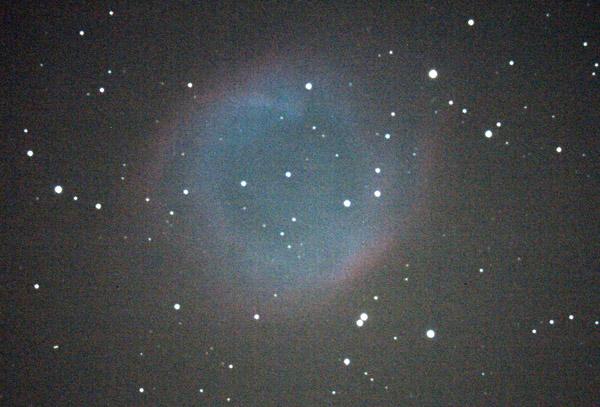
The faint and elusive Helix Nebula (NGC 7293) in Aquarius. 8-inch telescope at f/6.3; sum of three 6-minute exposures with Canon Digital Rebel, followed by heavy digital processing resulting in cloth-like texture.
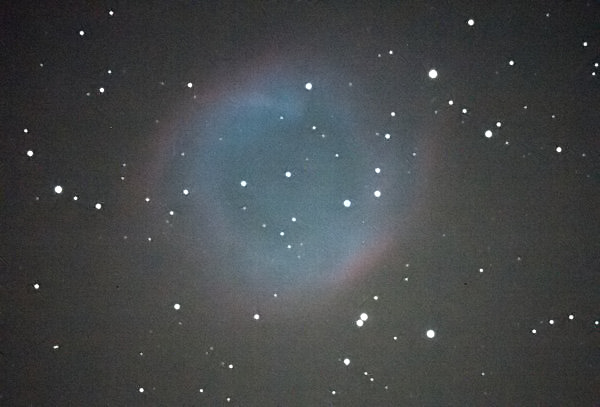
Same image after noise removal with Neat Image software.
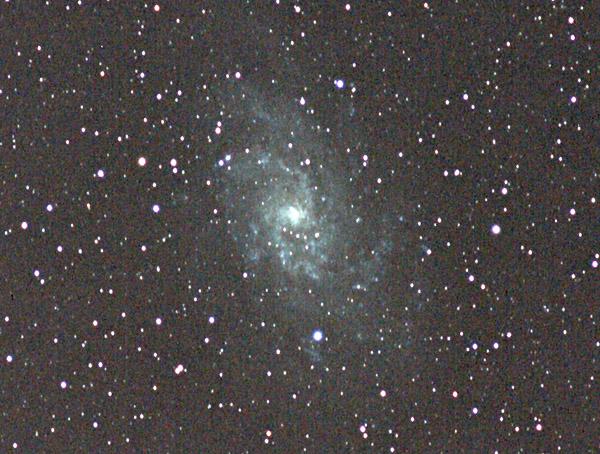
Galaxy M33 in Triangulum. Nikon 300/4 lens at f/5.6 with lens mount adapter on Canon Digital Rebel body. Sum of three 6-minute exposures.
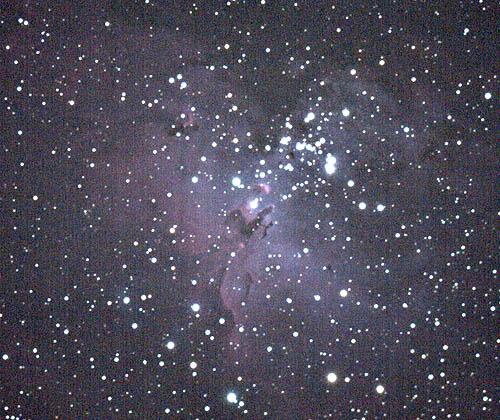
The Eagle Nebula (M16) containing the "Pillars of Creation" (three columns at center). Composite of several 3-minute exposures through 8-inch telescope at f/6.3 with Canon Digital Rebel body.
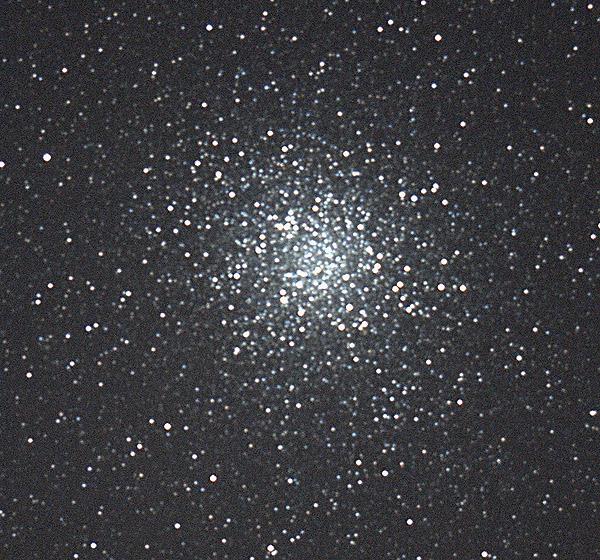
Globular cluster M22 in Sagittarius. Same technique as previous picture.
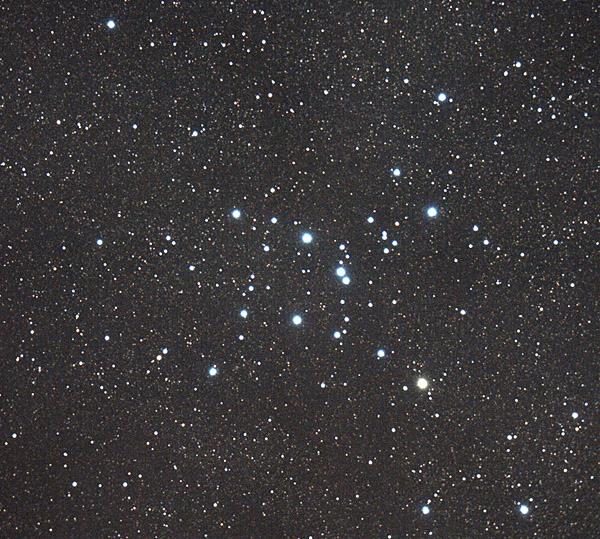
Ptolemy's Cluster (M7), a star cluster known since ancient times. Same technique as 2 previous pictures.
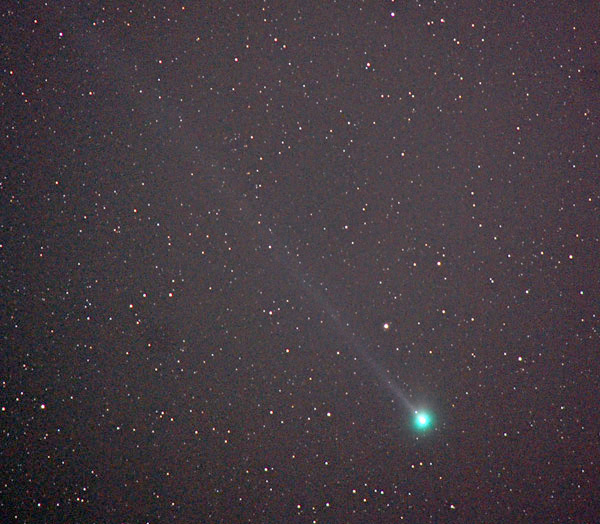
Comet SWAN (C/2006 M4). Single 4-minute exposure with Nikon D80 and 300-mm f/4 lens, October 29, 2006.
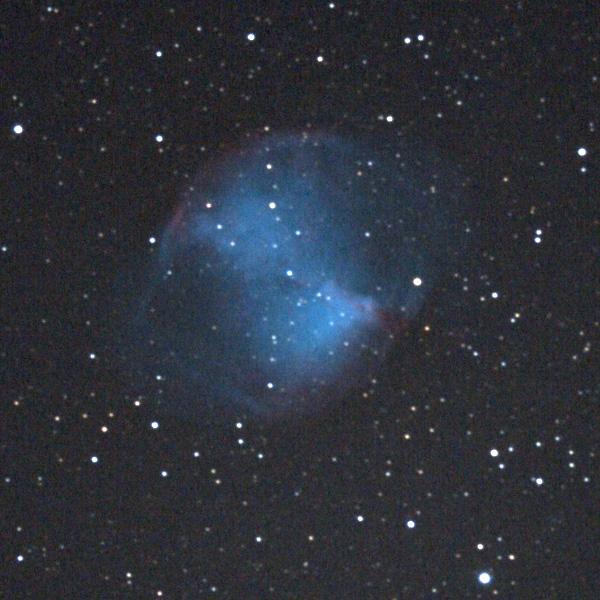
M27, the Dumbbell Nebula, actually a doughnut shape like M57 but viewed from the edge. Stack of five 3-minute exposures with Canon Digital Rebel, 8-inch telescope at f/6.3, through the murky summer skies of Athens, Georgia.
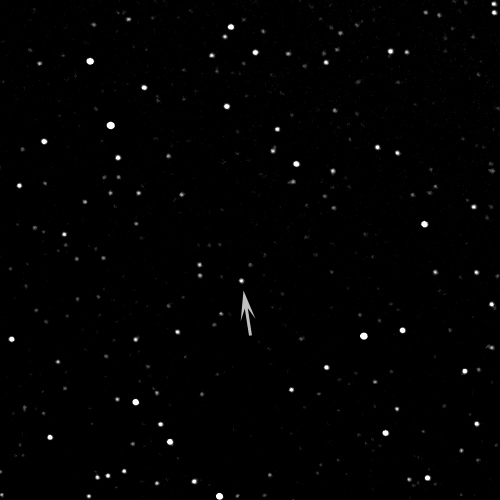
Pluto, no longer classified as a planet but definitely still there (August 26, 2006).
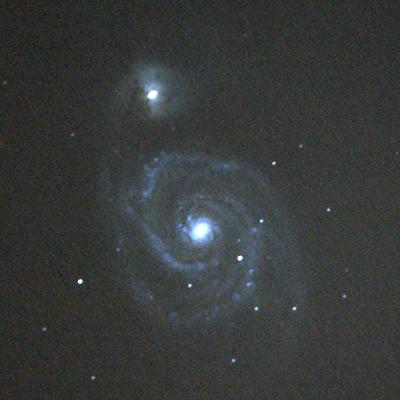
The galaxy M51, a single 3-minute DSLR exposure through the 8-inch telescope at f/5.6.
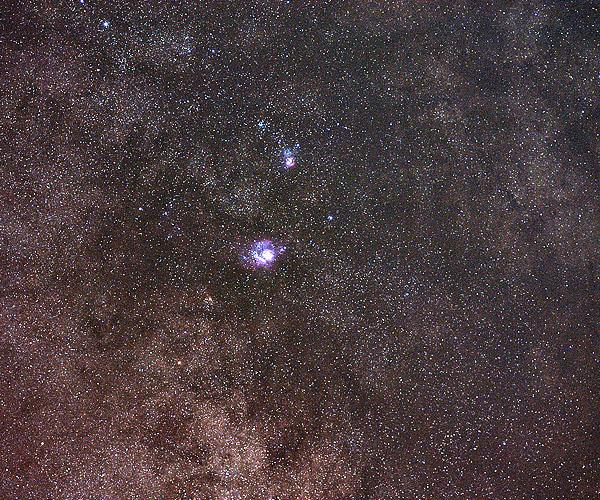
The Lagoon Nebula (M8) and its neighborhood in the summer Milky Way. Stack of several 3-minute exposures with Sigma 105/2.8 lens at f/4 and Canon Digital Rebel.
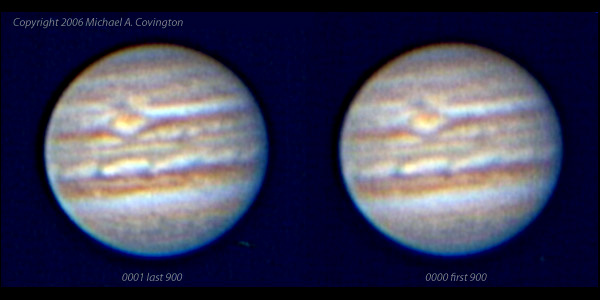
Jupiter with 2 Red Spots (the Little Red Spot adjoins the Great Red Spot at its upper right). Each is from a short video sequence; they are 7 minutes apart, so they show the planet from slightly different perspectives.
This picture can be viewed as a stereo pair by the crossed-eye method:
- Back up until you're at least 2 feet away from the screen.
- Hold your fingertip halfway between your face and the computer screen.
- Focus your eyes on your fingertip.
- Without moving your eyes, notice the Jupiter images. You should see 3 of them. The middle one is the fused 3-D image.
- Finally, without changing the direction of your gaze, focus your eyes on the middle Jupiter image.
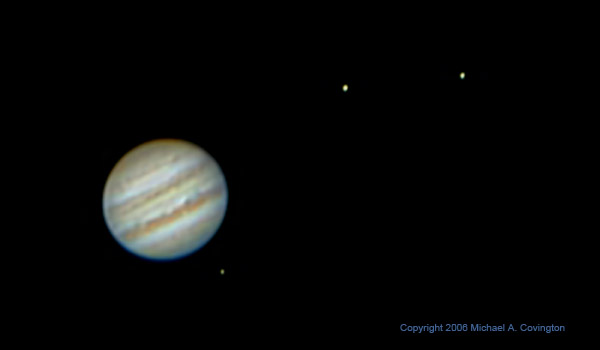
Jupiter, Callisto, Io, and Europa (May 23, 2006). 8-inch telescope, Philips ToUCam, 2000 frames of video recorded and about the best 1000 frames stacked and enhanced.
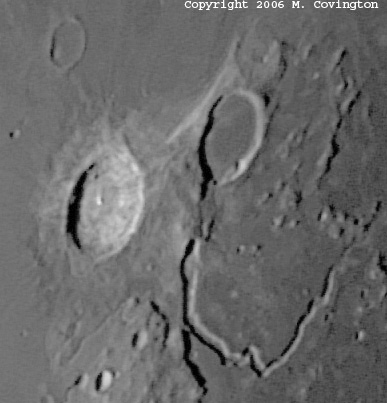
The lunar crater Aristarchus, formerly thought to be an active volcano. It is bright white and so tall that it often catches sunlight when the surrounding area is dark. 8-inch telescope, ToUCam Pro, best video frames selected and stacked.
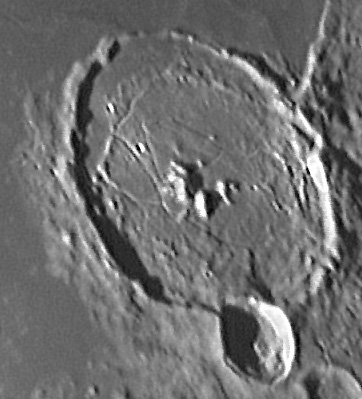
Lunar crater Gassendi, same technique as previous picture.
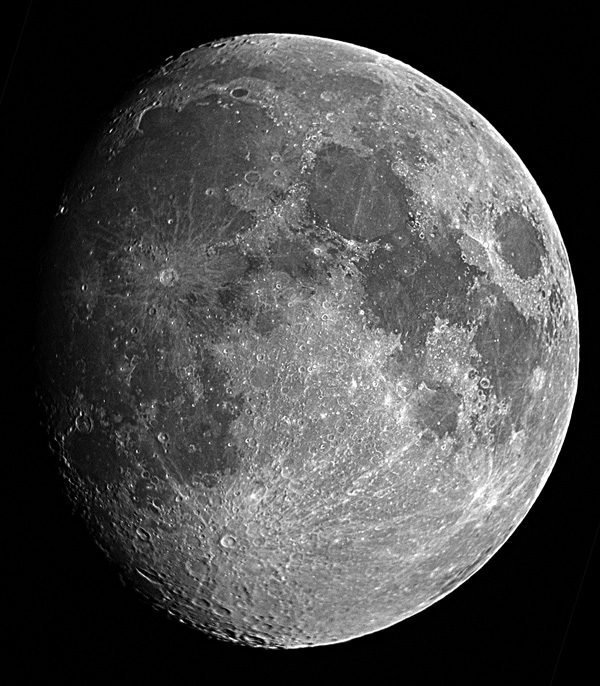
Full face of the Moon, taken by simply holding the camera (Canon Digital Rebel with 28-mm lens) up to the eyepiece of the 8-inch telescope (with 40-mm eyepiece). Note Aristarchus gleaming in isolation at the upper left.
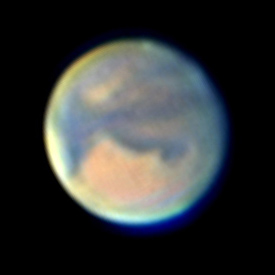
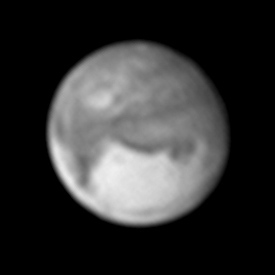
Mars in visible and infrared light, December 2, 2005. 8-inch telescope, 3× Barlow, ToUCam Pro, best video frames stacked and aligned with RegiStax.
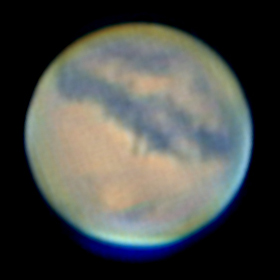
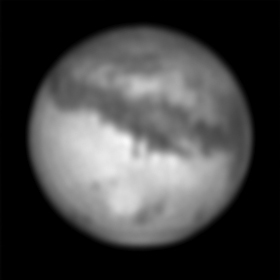
Mars, visible and infrared, November 6, 2005, same equipment and technique as previous pictures.
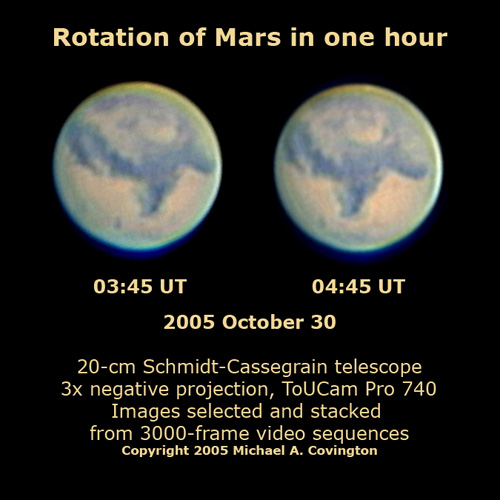
This one speaks for itself.
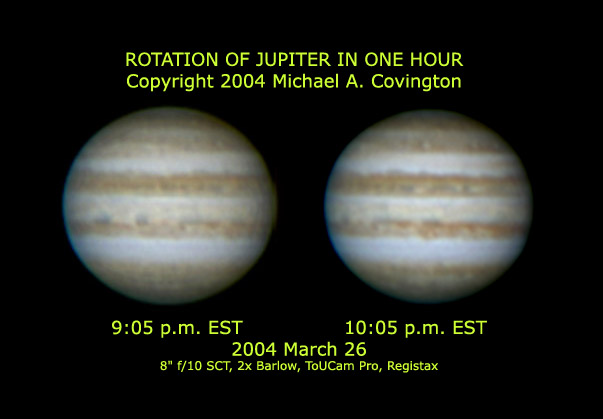
This one also speaks for itself.
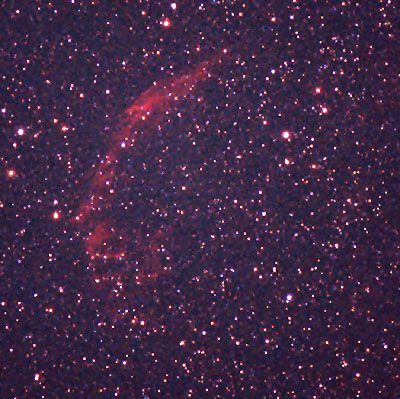
The Veil Nebula, a supernova remnant in Cygnus. Ektachrome E200 film pushed 1 stop, Nikon F3 body and 300/4 lens, single 5-minute exposure.
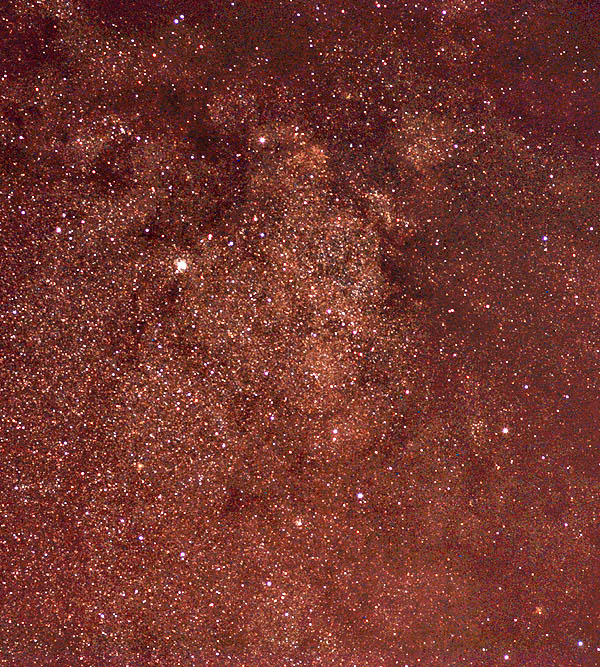
The Scutum Star Cloud in the summer Milky Way. Stack of 3 5-minute exposures with canon Digital Rebel (ISO 200) and Sigma 105/2.8 lens at f/4, under the murky sky of Athens, Georgia.
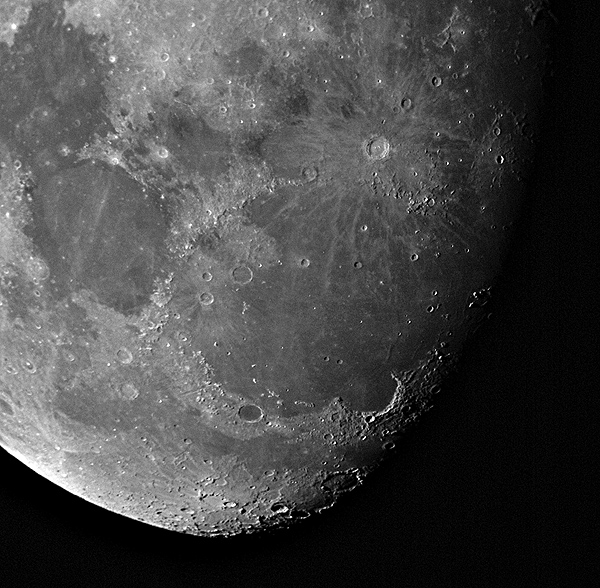
Moon (southern region), taken by holding a Nikon D70s (with 50-mm lens) up the eyepiece of my Celestron 5, then postprocessing with Photoshop.
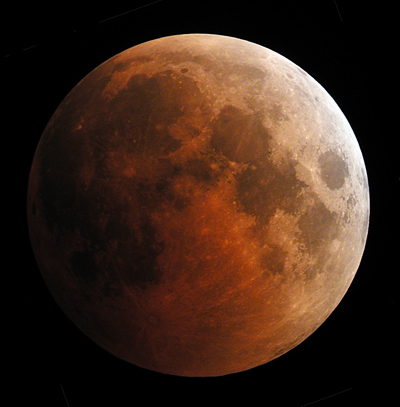
Lunar eclipse of October 27, 2004. Nikon Coolpix 990 attached to telescope eyepiece (25-mm eyepiece on Celestron 5).